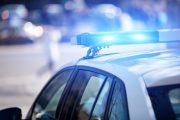
John Blake of CNN got it wrong. With a little checking he could have turned his article about the dangers of attending church on Sundays into something worth reading. Titled “One of the Most Dangerous Hours in America Is Now 11 o’clock on Sunday Morning,” it should have read: “The Safest Place to Be on Sunday Morning Is in a Church With Parishioners Exercising Their Second Amendment Rights.”
Blake presented his bias against guns early in his article: “Many of the contemporary issues afflicting the country — too many people carrying concealed weapons, domestic disputes that turn violent, people struggling with mental illnesses — are now spilling into Sunday morning worship services, pastors and security officials say.” After reviewing the remarkable heroism of Jeanne Assam (“God, the Gunman & Me”) in December 2007 at the New Life Church in Colorado Springs, he claimed that “The New Life shooting in Colorado ushered in an era of mass shootings where even churches are no longer safe.”
According to Lifeway Research, however, there have been just 23 fatal church shootings since the Columbine High School shooting in 1999, or about one a year. The first one recorded occurred at the Wedgewood Baptist Church in Fort Worth, Texas, in 1999. There were ten others in the years leading up to the shooting at New Life — this in a country where there are an estimated 70,000 Protestant churches.
Blake did get one statistic right: New Life typically draws around 14,000 parishioners every Sunday, and between 200 and 300 of them carry a concealed firearm. And there have been no reported mass shootings at that church’s campus since Assam confronted the killer back in 2007.
Thanks to the expansion of Second Amendment rights by more and more states allowing constitutional carry (carrying of a sidearm without first obtaining permission from the government), security measures protecting churches now routinely include those unknown worshippers ready to protect precious life while worshipping.
Lifeway reported that nearly six out of every 10 Protestant churches have “an intentional plan for an active shooter situation,” and 90 percent of those plans include worshippers carrying concealed. As Lifeway said, “Compared to three years ago, pastors say they’re more likely to be relying on armed churchgoers and less likely to have a no firearms policy for their building.”
It’s revealing that Audrey Hale, the mass murderer at Covenant School in Nashville, selected that school because of its lack of armed security. A city council member told the New York Post that the shooter had “looked at” two other schools before deciding that “the security was too great to do what she wanted to do. So she chose a private Christian school for, probably the reason is that the security [there] is a whole lot less.”
This affirms what John Lott of Crime Prevention Research Center has been substantiating for years: The presence of an armed target greatly reduces the chance of that target turning into a statistic.
First of all, Lott reports, the number of mass public shootings (not just at churches) since 2013 has averaged fewer than five per year, far fewer than that “era” of mass shootings “ushered in” by the New Life Church shooting 16 years ago suggested by Blake.
Lott also keeps current a database documenting situations in which concealed-handgun permit holders have stopped mass shootings from occurring. He points out that his database isn’t complete, however, because the media doesn’t consider such neutering of potential mass shootings worthy of coverage:
Permit holders stopped some mass public shootings that gained extensive news coverage, but only a few stories mentioned that a permit holder stopped the attack.
The stories frequently get other facts wrong.
For instance, missing from headlines was the incident in El Paso, Texas, on February 5 in which a permit holder stopped a shooter who had already shot four people and threatened others. Wrote Lott: “Many initial news reports had credited an off-duty police officer with stopping the attack.” Instead, though, it was an armed bystander who ended the rampage before it got worse.
It’s little wonder that CNN viewership continues to slump, with sloppy and slanted articles by journo-propagandists such as Blake continuing to show the network’s anti-gun bias.




